The audience at the first preview of Vivid: Grand Show is not your usual Philip Treacy crowd. There are no celebrities, no royalty, no hats and certainly no designer clothes. Instead it is a low-key mix of tourists, teenagers and older Berliner women in their finery: T-shirts with glittery patterns and two-tone hair – three tones if they're feeling festive.
At the Friedrichstadt-Palast theatre, in Berlin, many are hypnotised by what they have just seen: 30 chorus girls in shiny black full-body suits, high-kicking under the illuminated saucers mounted vertically on their heads. As the sea of long legs moved at precise angles, the white saucers began changing colour. The long kick line looked left, then right, legs rising and falling in unison, and the audience sighed. “The perfection...” a Viennese woman nearby said, knocking back a glass of sparkling wine.
It’s only the interval, but Treacy’s sorcery has already bewitched the 2,000-strong audience – and it’s all the more impressive because most know nothing about the Irish designer.
My favourite character in history is Florenz Ziegfeld. He believed in thrilling people when they saw a show, and I think people still respond to the fantastic
After another busy year fitting fashion muses, pop queens and Ascot-goers – with a royal wedding for good measure – the Galway-born hatmaker and designer has never been busier. So why has he agreed to design an enormous revue that includes about 500 outfits for 100 artists?
Treacy himself isn’t altogether sure. “I work in the theatre of fashion, but actual theatre was another departure entirely,” he says. “It was one of those seductive requests that I found difficult to refuse, though it took me a long time to say yes, too.”
His hesitation is understandable. The Friedrichstadt-Palast is one of the world's leading revue stages. Every two years it produces a new spectacle in co-operation with a leading fashion designer. In 2014 it was Thierry Mugler, in 2016 Jean-Paul Gaultier.
"Initially I said I can't possibly follow those people. They were the kings of fashion when I started out," Treacy says, mindful of their rave reviews and record ticket sales. Eventually he yielded, encouraged by a huge budget and his love of another king who, a century on, is still feted for his eye-popping Follies revues.
“My favourite character in history is Florenz Ziegfeld. He believed in thrilling people when they saw a show, and I think people still respond to the fantastic,” Treacy says. “When you design for a fashion show it lasts a very short time, whereas it is very appealing that 2,000 people will see what you do every night for two years.”
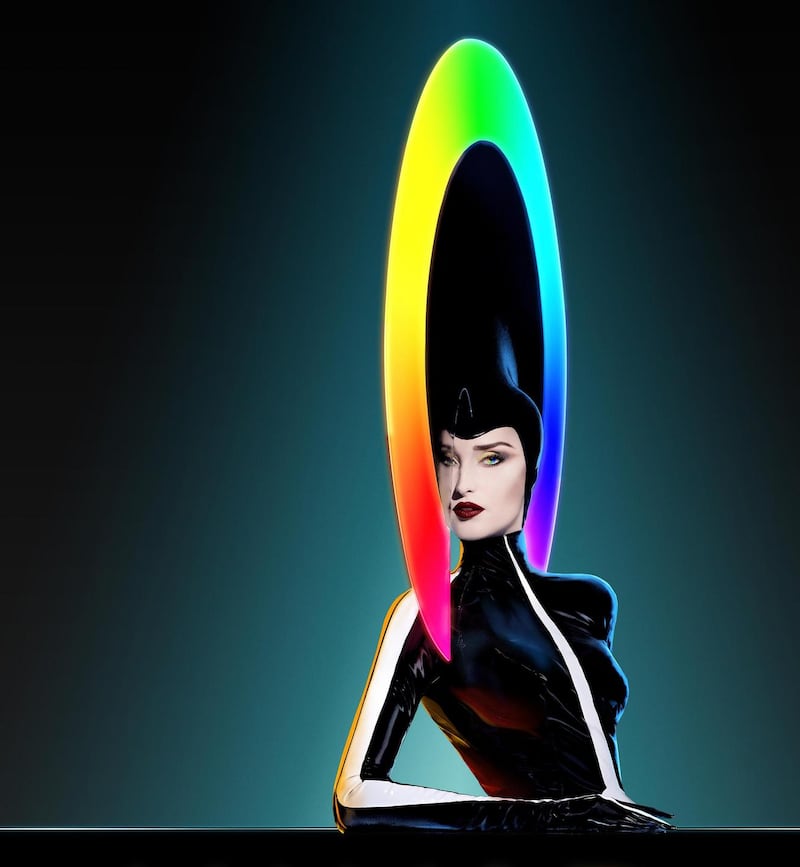
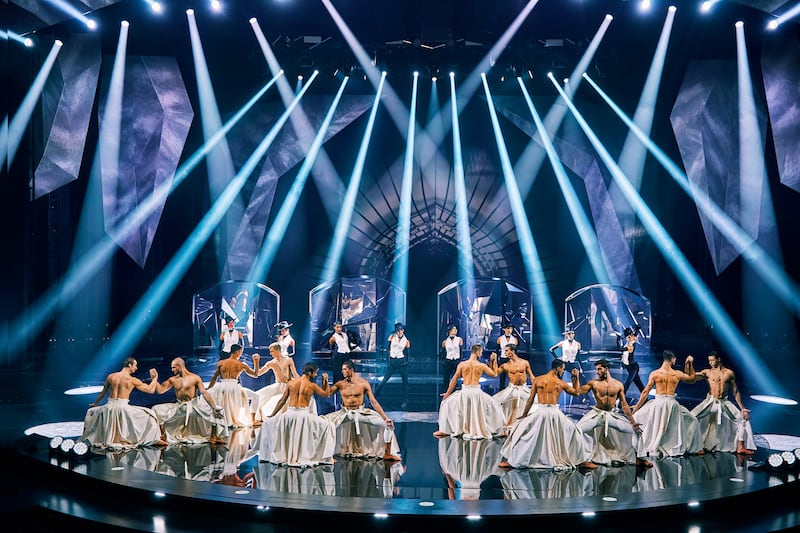
For the Berlin Palast, which keeps alive the revue tradition against the odds, there was an irresistible appeal in reviving the Ziegfeld Follies tradition of statuesque showgirls gliding around effortlessly in outrageous head creations.
“Philip Treacy was on my list for a long time,” says Berndt Schmit, the theatre’s artistic director. “Philip’s known here in fashion circles but is not the household name name here he is in Britain. That is going to change.”
As boss of the theatre he remembers energetic discussions with the designer about just how exquisite and expensive the creations needed to be for audiences watching from 30m rather than than a fashion-show audience 3m away. Treacy insists he got his way thanks to his motto: “God is in the detail.”
“To be quite honest nobody has a budget these days, but the Friedrichstadt-Palast does,” he says. “I didn’t really buy into the ‘nobody is going to notice’. I notice. The audience does, too, subconsciously. It was refreshing and exciting to develop an idea that was expensive to produce but would be visually exciting.”
We’re deep inside the bunker that is the Friedrichstadt-Palast, an East German-era complex with what they claim is one of the world’s largest stages. In a windowless room the show’s costume director, Elisabetta Pian, is examining some nature-inspired Treacy creations that will have their first outing in eight hours’ time. Hanging on one rail is a massive lily; on another is a round headpiece garland of artificial pink orchids. They are beautiful but unwieldy beasts.
“The big challenge for the dancers was learning how to move with these head creations, because it’s not something many learn these days,” Pian says.
There are more than 100 creations in all: big hats with the trademark Treacy swirl, slanted mad hatters, animal hats, spiky hats. Among them are playful nods to his most famous creations for Grace Jones and, for insiders, a huge butterfly creation and slanted saucer hats that evoke his late collaborator Alexander McQueen and his early champion Isabella Blow.
Designing Vivid was a major endeavour for the hands-on designer. In his London atelier Treacy made 26 set-piece hats personally and designed the rest for manufacture in Berlin or, in the case of the kick-line hats that bring to life his 2014 Brit award, a special company in Canada.
Getting the creations from design to stage involved close co-operation between the Irishman and his collaborators: the show’s director, Krista Monson, who has also directed Cirque du Soleil shows; its set designer, Michael Cotten, a favourite of everyone from Bette Midler to Michael Jackson; the fashion stylist Katy England, who as worked for McQueen and Jil Sander; and the costume designer Stefano Canulli.
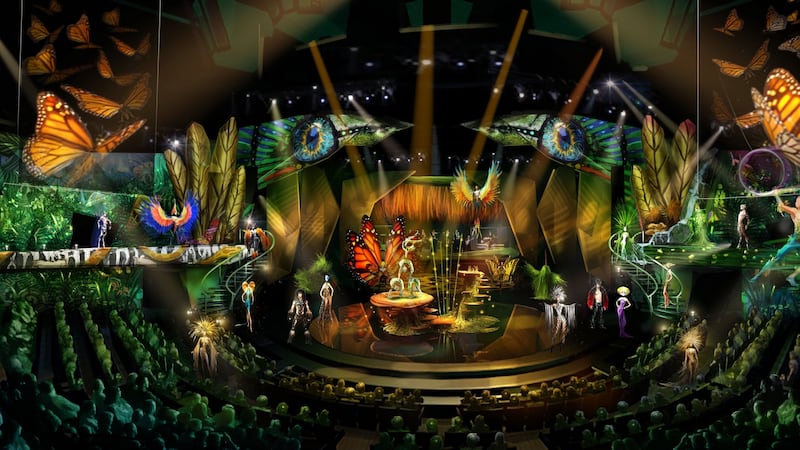

Given the mammoth undertaking, had Treacy finished his Vivid workload when the orders for this year's royal wedding began to arrive?
“Oh no, not at all,” he says with a tired sigh, recalling long nights to meet deadlines. Treacy is careful talking about his crowned clients, who value discretion. But as a self-professed royalist he credits Queen Elizabeth with saving, and reviving, the art of the hat.
Given his growing stable of loyal women clients, where, I wonder, are the men? Many have embraced fashion and even cosmetics in recent years, but where is the male hat influencer?
Treacy is stumped for once, but he rallies quickly.
“I think men are more peacocks than women are, more particular sometimes, but I can’t think of one,” he says. “All men are particularly tricky about what they wear these days. There are the footballers: some of those boys are pretty sharp dressers and a helpful influence.”
The idea of influencers reflects a shift in his industry, he says, where power now rests more with the consumer than the designer. Everyone with eyes and a smartphone can be their own individual stylist.
“There is no one type of fashion that is the style people wear. The era of everyone buying the same thing is over,” he says. “I started at a moment when designers had a very particular point of view so you knew where the clothes were from by looking at them. You can’t tell now who designed them.”
Today everyone is a photographer, everyone is a journalist, everyone is everything, and, while I personally quite like the attitude, there is a difference
A chatty and engaging interviewee, the 51-year-old is old enough to remember the old fashion world yet is still young and curious enough to celebrate new realities and opportunities.
Today fashion has “slightly lost its mojo”, and being a designer has “lost its panache”, he suggests, yet he doubts the era of professional democratisation can continue at its current pace.
“Today everyone is a photographer, everyone is a journalist, everyone is everything, and, while I personally quite like the attitude, there is a difference,” he says. “Some have trained to be a designer. Being a designer is not about going to a factory, choosing what they have and changing the colour.”
Born in Ahasragh, in Co Galway, in 1967, Treacy showed an early interest in fashion and sewing. He moved to Dublin in 1985 an studied fashion at the National College of Art and Design before moving to London in 1988 for an MA scholarship at the Royal College of Art.
Looking in next door from Britain for 30 years now, he is heartened to see Ireland has joined the global style brigade. “Everybody is embracing their inner red carpet,” he says. “All those young ladies are heading for the [Galway] races in a very full-on look that didn’t happen when I was growing up there.”
It’s all part of a broader Irish can-do confidence, he thinks, that goes far beyond ladies’ day at Ballybrit. “The Irish have embraced the world and are part of the great creative world in all fields,” he says. “People are far more adventurous.”
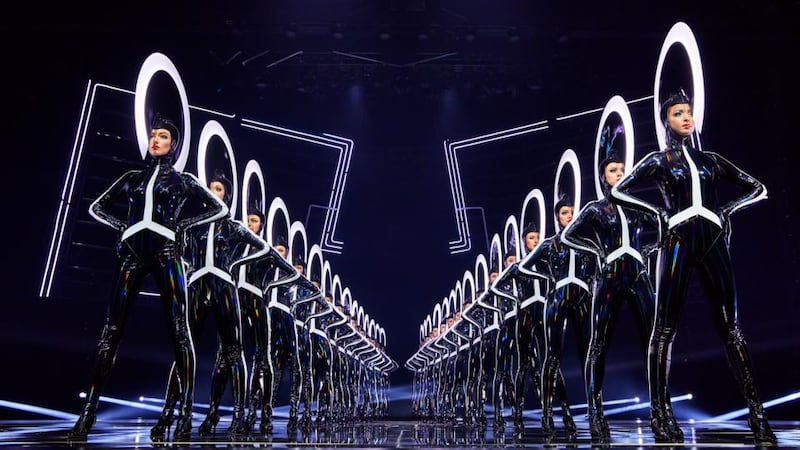
Adventurous is one word to describe his turn last July as a castaway on BBC Radio 4's Desert Island Discs, a show Treacy says he was aware of but had never listened to. Only when he was in studio, being softened up by favourite tracks from Roxy Music to Kate Bush, did it dawn on him just what the trick of the long-running programme is.
“You choose music that creates an emotional response, and it’s a licence for [Kirsty Young, the show’s presenter,] to ask anything she felt like asking,” he says in a pained voice. “I wish I had never done it, but I did, and it was too late at that point.”
The music clearly worked, and listeners were treated to classic Treacy. A good hat, he told listeners, is like a surgery-free facelift; the hated fascinator, he said, “sounds ilke a dodgy sex toy”.
Between the zingers there were touching moments, too. When, decades ago, an incredulous friend of his father’s suggested it was odd for a boy like Philip to play with dolls, he remembers his father saying: “Whatever makes him happy.”
It was a lump-in-the-throat moment and a touching tribute to his late father from a man who, three decades after leaving, still has an ambivalent relationship with his homeland.
I still meet many young Irish gay men in London who have not had very nice experiences in Ireland. It bothers me when they tell me that that their families disowned them
For one thing Treacy wonders if, three years on, the marriage-equality referendum really reconfigured Ireland overnight as the liberal and tolerant place it likes to sell itself as now.
“I still meet many young Irish gay men in London who have not had very nice experiences in Ireland, and it is just shocking,” he says. “It bothers me when they tell me that that their families disowned them and not everybody accepts them.”
That revives memories of his own early days in the British capital, in the late 1980s, contributing to a huge Aids quilt spread out in Hyde Park. Before effective therapy, when HIV was a death sentence rather than the chronic condition it is today, quilts were a kind of group therapy that allowed people to work together and celebrate the life of a loved lone lost to Aids.
Treacy’s section of the London quilt had an extra level of meaning. It read: “This is for all of the Irish people who have died whose families never knew the reality of their lives.”
“It still sticks in my throat,” he says. “And it is still going on. It is very sad.”
The distance many gay men still put between themselves and their homeland is something familiar to Philip Treacy. He may be Ireland’s most famous gay export to London since Oscar Wilde, but it hasn’t spared him or his family experiencing homophobia in oh-so-modern Ireland. He would rather not read the details in the newspaper, but it’s fair to say it has left its mark.
“I don’t go to Ireland very often,” he says. “And even though it’s different for me, because I have a bit of celebrity behind me, it means f**k all, to be honest with you.”
With Berlin competing with London as a European home for black sheep, Treacy and his team have made Vivid an in-your-face celebration of life and diversity, just like the theatre the show calls home.
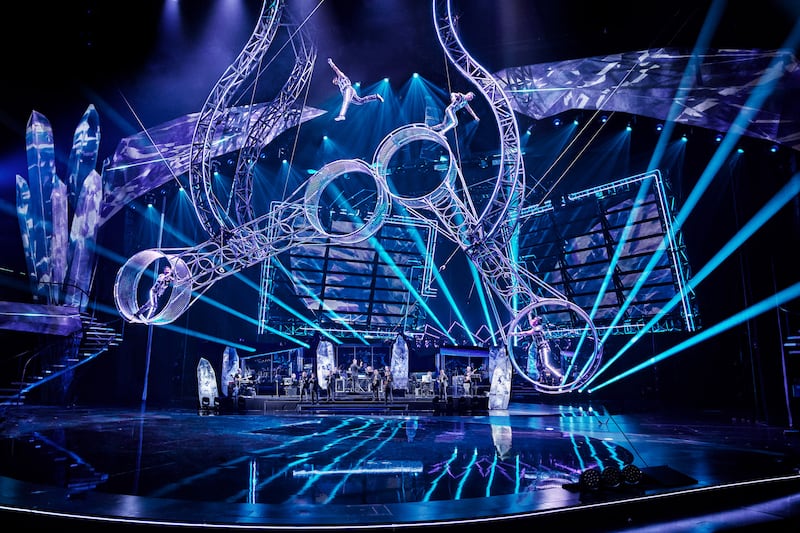
Two years ago the Friedrichstadt-Palast launched Respect Each Other, a civil-society initiative celebrating difference and tolerance. With the far-right now on the march in Europe again, calling into question values many thought were a given, the initiative was a far-sighted move in a city that knows, like few others, how quickly diversity can be undermined by extremism and exclusion.
The second half of Vivid bursts into life with Fun House, a giant version of Treacy's iconic Grace Jones glitter bowler hat. Inside and around the hat set, the cast indulge in all the playful kink you would expect in Berlin.
There are male dancers wearing nothing but Treacy hats, a gender-bending Josephine Baker banana outfit tribute, Duran Duran’s Wild Boys, and even a bit of the Bobby Orlando sound floating on top.
A century after Florenz Ziegfeld offered Depression-era New Yorkers a welcome distraction, Philip Treacy's Vivid is a big and bold antidote not just for our off-kilter world but also for our self-medicated Netflix anesthetic. Vivid is about sharing a good time together because, as someone once sang in a famous Berlin musical, what good is sitting alone in your room? "Real performance by talented people draws you in, and the Palast performers are the most amazing collection of men and women," Treacy says.
After three decades in the business, Ireland’s master milliner – and utterly charming gentleman – has a parting word of advice about hats that is equally valid for Irish people who obsess over “notions” and people they believe “have” them. “The mistake people make is to think a person wearing a hat is showing off,” he says, “when they are are just enjoying themselves.”
Vivid: Grand Show is booking now at the Friedrichstadt-Palast, in Berlin











